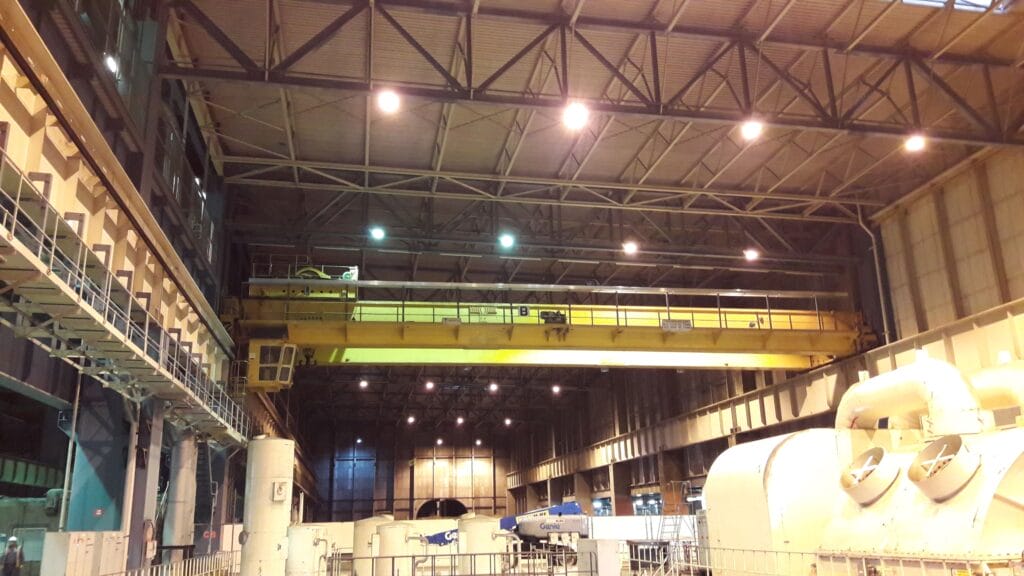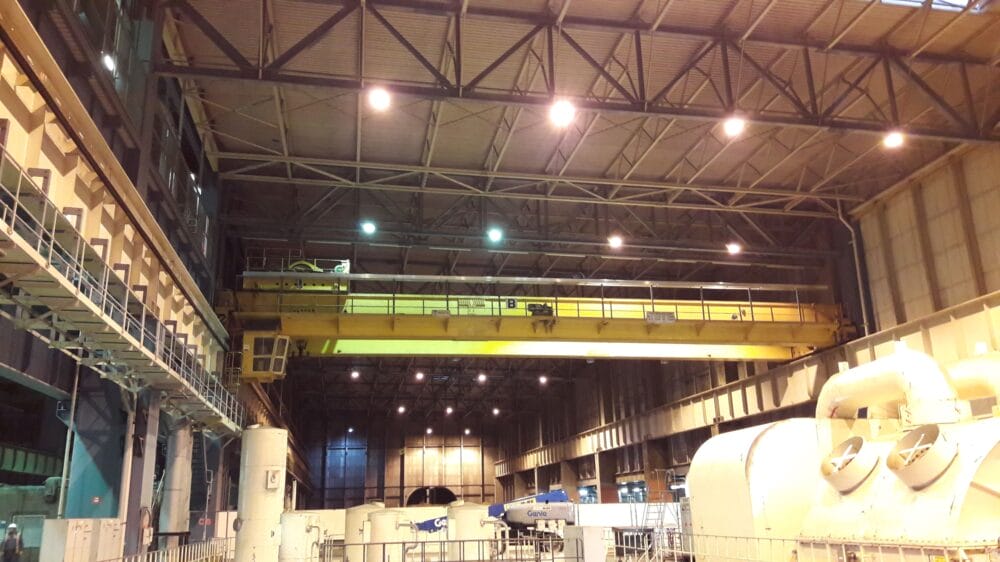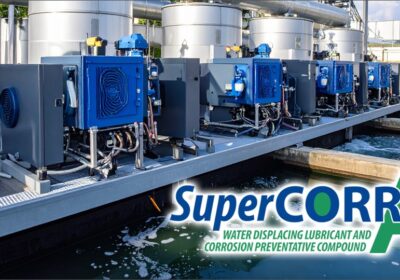According to predictive maintenance provider, Senseye, large plants lose an average of 27 hours a month to machine failures. Digital, dynamic control of industrial cranes on the factory floor is a largely unknown, but pivotal, source of uptime. Here Andy Swann, business development manager for cranes & power transmission at CP Automation, explains why.
When using a magnetised crane to lift heavy or bulky metal materials, operators must manage the crane’s motion with the utmost control. By retrofitting a magnet controller, operators can manipulate the crane magnet’s performance, preventing harm to staff, nearby equipment and the crane itself.
The pitfall of contactor-based controls
Operators traditionally control crane magnets by adjusting the input electromagnetic current with an on/off switch. Although having an on/off switch allows the user to pick up and release loads when they choose, it can also deteriorate the magnet over time.
Because the operator can only turn the magnet on or off, the maximum current is fed in and then withdrawn when the load is released. After a series of lifts, the magnet can start to overheat, and the asset will sweat because of the current flow. Consequently, operators and plant managers must regularly swap out the magnets to prevent potential of failure, long-term damage, increasing costs and extending crane downtime.
A more digital approach
While contactor-based controls can be harsh on the magnet, operators can soften the impact by retrofitting a digital controller that can step-up the input current. Rather than slamming in the maximum current all at once, users can gradually increase the input according to the load or have this pre-programmed into the software. By digitally controlling the demagnetisation current, operators can maintain a full load while reducing the lifting charge in the circuit.
Building on the topic of digital transformation in manufacturing, Nina Gryf, senior policy manager at Make UK explained: “Manufacturers are undergoing a profound digital transformation with the potential to transform productivity, resilience and sustainability.
“The investments companies are making will play a key role in the future of manufacturing, powering them through the challenges that lie ahead with greater productivity, better skill levels and reduced emissions,” continued Gryf.
Improved resilience
Another source of crane downtime in production facilities is a mains power failure. Nonlinear loads and voltage distortion are both significant issues because they can disrupt magnet performance and damage the crane’s electrical components. Even the slightest trip can make a big difference.
Power failures can also have a detrimental safety impact. If the crane uses a traditional contactor-based control, then in the event of an outage of power trip, the load will simply drop — posing a risk to anyone in the vicinity.
To maintain uptime, some digital magnet controllers, like the Magnepulse DMC Series 2, include power ride-through features and systems, which operators can program to maintain resilience. This ensures that the magnet remains energised during interruptions and that the lift continues.
Predictive maintenance
“Being able to access highly accurate analytics from monitoring devices can improve predictive maintenance no end,” added John Mitchell, global sales and marketing director at CP Automation. “Sometimes, routine maintenance activities are not needed, and adopting a more targeted approach based on need can free-up machine operators to focus on more pressing tasks.”
Some digital controllers feature data loggers and can provide performance information, such as alarm, fault and run details — giving operators real time insights into magnet performance. Meanwhile, when running a contactor-based controller, operators would need to use a digital multimeter to measure voltage, current, resistance and other electrical values to identify any disturbances.
By retrofitting a digital controller, operators can focus on predictive maintenance rather than routinely scheduling the same preventative maintenance tasks. This can improve uptime by improving asset performance and ensuring that maintenance is only carried out when needed, based on the controller’s condition-monitoring analytics.

Machine failure and downtime is a significant challenge for production facilities — large plants are losing over a day’s worth of time each month because of it. Digital magnet controllers can play a subtle, but critical, role in improving uptime by preventing the need for frequent crane magnet changes, safeguarding against power outages and enabling predictive maintenance.
If you have an overhead crane in your factory or facility, digital crane magnet controllers can give you a competitive edge by avoiding the traps that so many others fall into. To find out more, contact CP Automation and speak to a dedicated crane specialist.








